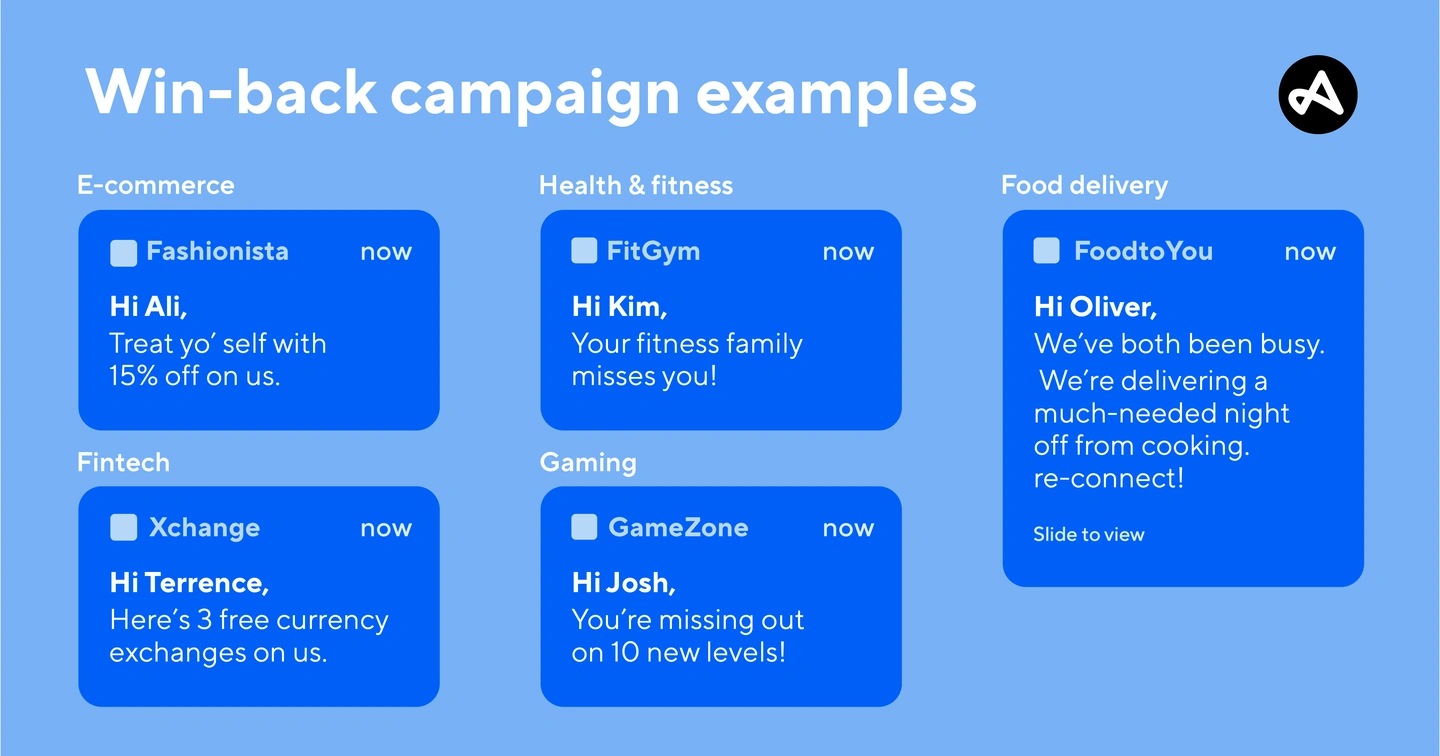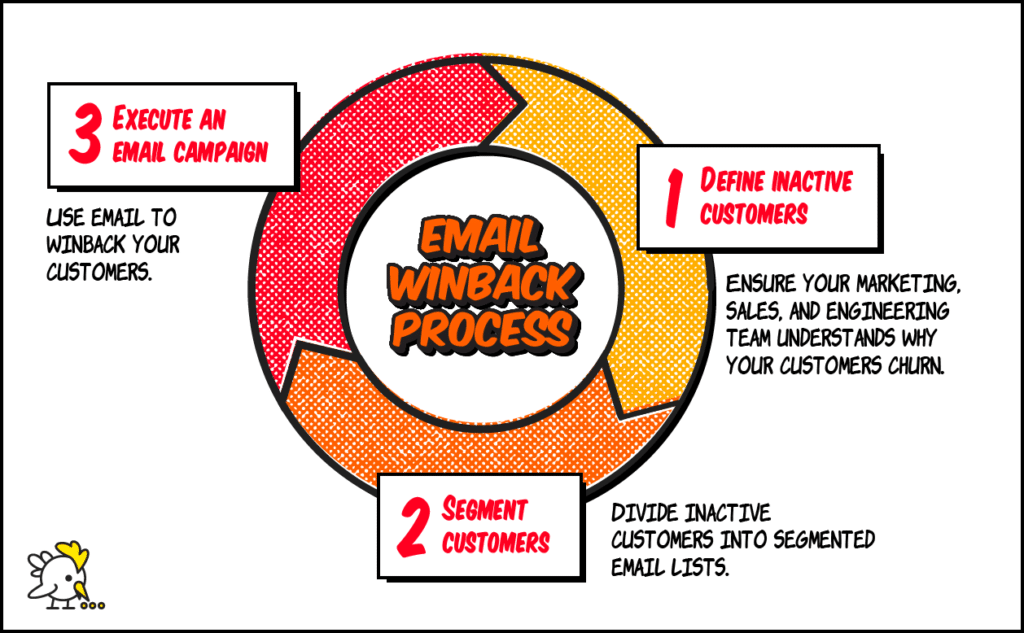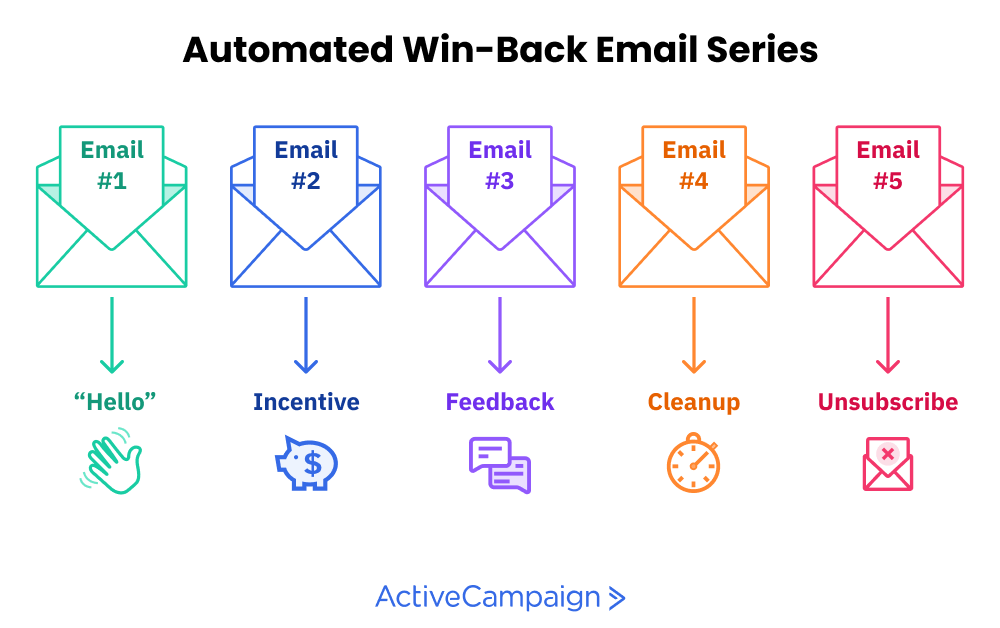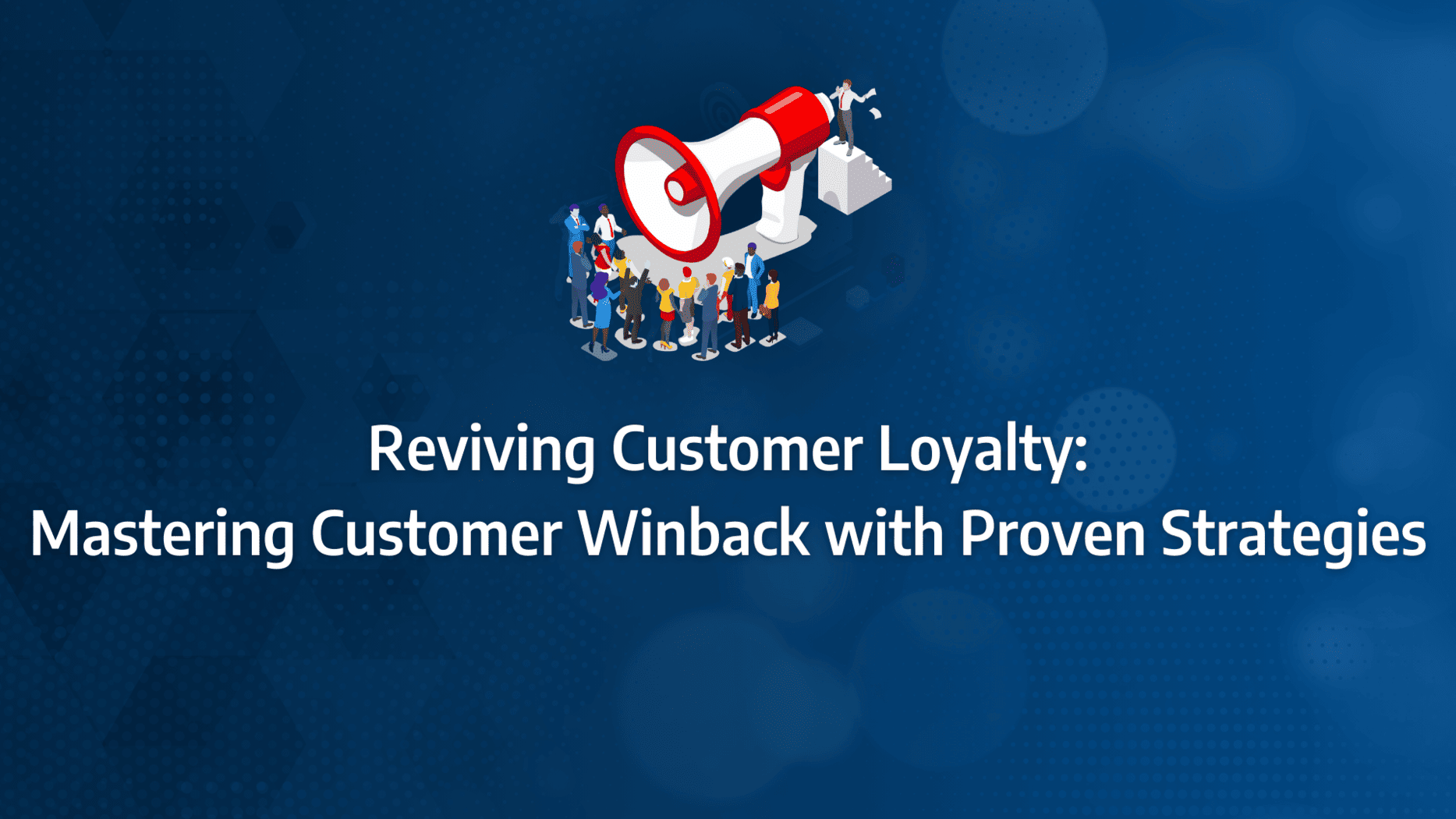Imagine pouring time, energy, and resources into acquiring customers, only to see them drift away, seemingly never to return. It’s a frustrating reality many businesses face, and the impact on your bottom line can be significant. But what if there was a way to bring those lost customers back into the fold, rekindling their loyalty and reigniting their engagement with your brand?
Understanding why customers leave is the first step in reversing the tide of churn. By identifying these reasons and addressing them head-on, you can develop winback strategies that not only recover lost customers but also reinforce their commitment to your brand. In this post, we’ll explore actionable techniques that have been proven to revive customer relationships, helping you turn potential losses into regained loyalty. Get ready to discover how to transform churn into an opportunity for growth.
- Identifying the root causes of customer churn is crucial to developing effective winback strategies that address specific pain points and barriers to re-engagement.
- Personalised communication, tailored to the reasons behind a customer’s departure, significantly increases the likelihood of successfully winning them back.
- Offering exclusive deals or incentives can be a powerful motivator for lapsed customers to return, especially when combined with a personalised outreach strategy.
- Timing is critical in customer winback efforts; reaching out too late can result in missed opportunities, while proactive engagement can reignite customer interest.
- Segmenting lost customers based on their behaviour and reasons for churn allows for more targeted and effective winback campaigns, maximising the chances of success.
- Continuous monitoring and refinement of winback strategies ensure that your efforts remain relevant and effective as market conditions and customer expectations evolve.
What is a customer winback strategy and why is it important?
Understanding Customer Winback Strategies
Re-engaging lost customers can be a pivotal driver of revenue growth. This is where a customer winback strategy becomes indispensable. Designed to reconnect with previously disengaged customers, this targeted marketing programme leverages rewards, incentives, and special offers to encourage customers to return and re-engage with your brand.
A well-executed winback campaign strategy is versatile, allowing you to reconnect with a range of customer segments. These include first-time customers who haven’t made a subsequent purchase, potential customers who abandoned their shopping carts, and even those who have cancelled paid subscriptions. By implementing a robust customer winback strategy, you can not only boost your customer lifetime value but also significantly increase your revenue streams. While re-engaging lapsed customers presents its challenges, it is undeniably more cost-effective than acquiring new customers, making it a strategic priority.

Identifying the Most Valuable Lapsed Customers
The effectiveness of any customer winback strategy hinges on your ability to identify and prioritise the most valuable lapsed customers. To optimise your efforts, focus on customers who have historically demonstrated high lifetime value and contributed significantly to your company’s success.
Research published in the Journal of Marketing highlights that the most valuable customers to win back are those who have previously referred your brand to others, those who left due to price rather than service quality, and those who had unresolved or poorly handled complaints. Prioritising these customers in your winback campaigns ensures that your efforts are both efficient and impactful.
Source: MannHeim University
The Importance of Winback Campaigns
In the post-COVID-19 era, the cost of acquiring new customers has surged, making it more crucial than ever to maximise the value of your existing customer base. Winback campaigns are a strategic response to this challenge. They enable marketers to navigate the complexities of shorter attention spans, an abundance of online choices, and the rapidly evolving needs of customers.
Data shows that repeat customers can be worth up to 10 times more than their first purchase, and it is significantly more cost-effective—up to five times cheaper—to retain existing customers than to acquire new ones. Despite this, the practicalities of individually tracking down lapsed customers can be daunting. This is where automated workflows come into play, allowing you to trigger a winback campaign strategy precisely when it is most likely to be effective.
What Matters Most?
Winback efforts are most effective when deeply aligned with the reasons a customer left in the first place. Clients often discover that by refining their value proposition to directly address past pain points, they can demonstrate clear product evolution. Additionally, marketers should nurture customer relationships post-churn by engaging them with authentic, value-driven outreach, ensuring these interactions feel more human and less transactional. This personalised, consultative approach often paves the way for long-term loyalty when customers do return, transforming what could have been a churn into a long-term opportunity.Get In Touch
How do I identify my most valuable lapsed customers for winback?
Remind Former Customers of Your Subscription Perks
One of the most effective customer winback strategies is to leverage targeted emails that remind former customers of the unique benefits associated with your subscription offerings. This approach is particularly powerful if a former subscriber makes a one-time purchase, presenting an ideal opportunity to rekindle their interest and address any feelings of cancellation remorse.
Immediately following a purchase, reach out to these customers to remind them of the perks they could be enjoying if they were still subscribed—benefits such as exclusive discounts, free shipping, loyalty points, and more. By highlighting these advantages, you can create a compelling case for them to re-subscribe.
Even if a former subscriber hasn’t made a recent purchase, a subscription-led re-engagement email can still be highly effective. Send a reminder a few days after they pause or cancel their subscription, prompting them to reconsider their decision. You might also experiment with waiting a few months before reaching out again, testing different timings to determine what resonates best with your audience.

Refresh Your Brand’s Image
If your brand’s current image is not resonating with your audience, it may be time to consider a refresh or even a complete overhaul. This could involve modernising your storefront, enhancing your packaging, or revamping your website with a more contemporary design. Updating your marketing materials to better communicate your brand’s message can also have a significant impact on customer perception.
Depending on the demographics of your target audience, adjusting your brand message or tone might be necessary to better align with their preferences. For instance, if you’re aiming to attract a younger audience, shifting your marketing focus to platforms like TikTok or Instagram could yield better results. Such updates can help reposition your brand in the minds of lapsed customers, making them more likely to re-engage.
Source: Harvard Business Review
Reach Out to Customers on a Personal Level
Building a strong, personal connection with customers is essential for successful customer winback strategies. A personalised approach to re-engagement can make a substantial difference in whether a disengaged customer decides to return to your business. By understanding the specific reasons behind their disengagement and addressing their concerns directly, you demonstrate a commitment to their satisfaction.
Offering tailored solutions and incentives that address their unique needs can foster a renewed sense of value and trust in your brand. This personalised outreach not only helps to re-establish a positive relationship but also enhances the likelihood of long-term loyalty.
Ask for Feedback
Understanding why customers leave is the first step in winning them back. Actively seeking feedback from lapsed customers is crucial for identifying areas where your business may need improvement. It’s important to note that only one in 26 customers typically voices their complaints, so making it clear that you value their input is essential.
You can gather feedback by encouraging customers to fill out surveys or leave reviews, offering incentives to motivate participation. For example, if feedback indicates that poor customer service is a recurring issue, it’s vital to implement enhanced training programmes to address this. Similarly, if a particular product or service receives frequent negative reviews, it may be necessary to revisit and improve that offering.
What are some effective email strategies for re-engaging lapsed customers?
Identify Inactive Contacts
In crafting an effective customer winback strategy, accurately identifying inactive contacts is essential. Unlike a one-size-fits-all approach, determining when a customer becomes inactive varies across businesses. Some companies may consider an email address inactive after just a few weeks of no interaction, while others might wait several months before taking action.
To maintain a proactive winback campaign strategy, regularly review your sales data and interaction rates. This analysis should focus particularly on your most loyal customers, ensuring that those who have drifted away are promptly added to your inactive list. By doing so, you can tailor your customer winback efforts to re-engage these valuable contacts effectively.
Determine When to Send Emails
Timing is crucial in executing successful winback campaigns. Best practices in email marketing suggest sending winback emails every three months to contacts that have shown no engagement. The longer you wait, the harder it becomes to restore a personal and trusting relationship with your customers.
Integrating inactive customers into an automated messaging flow at three-month intervals strikes a balance. Sending these emails too soon could overwhelm the recipient, while waiting too long might result in them forgetting why they signed up in the first place. This strategic timing can significantly enhance the effectiveness of your customer winback strategy.
Write Compelling Copy
Creating engaging content is the cornerstone of any successful customer winback campaign. The first challenge is to entice your customers to open the email, and the second is to keep them engaged long enough to inspire a positive reaction. Here are some guidelines to maximise the impact of your winback campaign strategy:
- Use action verbs to make your message dynamic and engaging.
- Keep the language simple and avoid overly clever or complex phrasing.
- Steer clear of spammy subject lines that could deter recipients from opening the email.
- Prioritise brevity—concise communication is more likely to resonate with busy customers.
You don’t need to craft elaborate prose; instead, focus on delivering a clear and relevant message that resonates with your audience. Simplicity and clarity are key to the success of your customer winback emails.
Include a CTA
A well-crafted Call to Action (CTA) is essential for driving engagement in your winback campaigns. Rather than merely informing your customers about your offerings, your CTA should encourage immediate action. Consider these tips for crafting an effective CTA:
- Use strong declarative statements to convey confidence and urgency.
- Incorporate emotional and enthusiastic language to generate excitement.
- Leverage FOMO (fear of missing out) to motivate action.
- Provide a compelling reason for customers to click and engage further.
The objective of your CTA isn’t to pressure your customers into a sale; rather, it’s to prompt them to take a specific action, such as learning more or re-engaging with your brand. By focusing on what they might miss out on, you ensure that your customer winback strategy remains persuasive and relevant.
Winback Email Campaign Types
The “What Can We Do?” Winback
One of the most effective customer winback strategies is the personal touch. Sending a message from a personal account, rather than a generic corporate email, can be a game changer in re-engaging customers who have drifted away. The concept is straightforward: a brief, genuine message that checks in with the customer and acknowledges their absence. By asking, “What can we do to help?” you’re taking responsibility for their lack of engagement and showing a proactive approach in addressing their needs. This personal outreach can be instrumental in rekindling the relationship and encouraging them to re-engage.
The FOMO Winback
The fear of missing out, or FOMO, is a powerful motivator, especially when it comes to reconnecting with disengaged customers. Research from OptinMonster highlights that tapping into this psychological trigger is particularly effective with younger demographics. The idea behind the FOMO winback campaign strategy is to remind your customers of what they’ve missed during their absence—whether it’s a new feature, a significant update, or a special offer. These messages work best for customers who used to be active but haven’t interacted with your service for some time. By emphasising the value they’ve been missing, you can reignite their interest and prompt them to return.
The Winback Reward
When in doubt, a well-timed incentive can be just the nudge needed to bring lapsed customers back into the fold. This type of winback campaign isn’t about desperation—it’s about delighting your customers with something they find genuinely valuable. Whether it’s a freebie, a discount, or an exclusive offer, the key is to highlight the benefits they’ve been missing out on. By providing an enticing reason to return, you create a win-win situation: your customers feel appreciated, and you regain their business.

Introducing “The New You” Winback
In the ever-evolving world of SaaS products, it’s not uncommon for customers to drift away in search of something new. However, this also presents an opportunity to win them back by showcasing the latest developments in your offering. Similar to the FOMO strategy, the “New You” winback email is all about highlighting what’s new since they last interacted with your product. Whether it’s fresh features, updated resources, or exciting community news, the goal is to demonstrate that your product has continued to evolve and improve. By showing that you’ve been hard at work, you can entice former users to take another look and re-engage.
Implementing these customer winback strategies not only helps to re-engage your audience but also boosts retention and enhances the overall lifetime value of your customers.
Our Tactical Recommendations
We’ve found that segmenting churned customers based on behavioural data can significantly boost winback success. Clients often discover that tiered incentives, aligned with a customer’s prior value, work best when paired with direct, real-time email triggers tied to specific usage patterns. CEOs should also consider deploying content-driven approaches, using targeted blogs or case studies to subtly remind lost customers of the improvements they’ve missed.Get In Touch
How can I measure the success of my winback campaign strategies?
To maximise the effectiveness of your customer winback strategies, it’s essential to understand the metrics that gauge success. These metrics provide the insights needed to refine your approach and optimise your return on investment (ROI). Let’s delve into the key performance indicators that are crucial for evaluating the success of your winback campaigns, focusing on ROI and customer reactivation rates.
Measuring the Success of Customer Winback Campaigns
- Reactivation Rates: This metric measures the percentage of dormant customers who re-engage or make a purchase after receiving your winback campaign communications. It’s a direct indicator of how effective your customer winback strategy is in reviving interest among your lapsed audience.
- Conversion Rates: Tracking the conversion rates of recipients who responded to the winback campaign is vital. Analyse how many of these customers transitioned into active users following their interaction with your re-engagement messages. High conversion rates signal that your messaging is resonating and driving the desired action.
- Email Engagement Metrics: Assessing email open rates, click-through rates, and overall engagement specific to your winback emails provides valuable insights. These metrics reveal how well your customer winback messages are connecting with dormant customers and encouraging further interaction.
Assessing Return on Investment (ROI)
- Cost per Reactivated Customer: To evaluate the cost-effectiveness of your winback campaign strategy, calculate the total cost of the campaign against the number of customers reactivated. This metric helps determine whether your investment is yielding sufficient returns.
- Lifetime Value (LTV) Increase: Analyse the potential increase in the lifetime value of customers who were reactivated by your customer winback strategy. Compare their average spend or engagement levels post-campaign with their historical data to gauge the long-term impact of your efforts.
- Revenue Generated: Measure the revenue directly attributable to your winback campaign from reactivated customers. This metric is crucial for quantifying the campaign’s impact on your bottom line and demonstrating its financial viability.
Adopt a Customer-First Mindset
A successful winback campaign strategy isn’t just about boosting revenue; it’s about rebuilding trust and loyalty. Adopting a customer-first mindset means placing the customer at the heart of all organisational decisions. Businesses that focus on what benefits the customer—rather than solely on profitability—tend to see greater success in their re-engagement efforts, fostering long-term loyalty and sustained customer relationships.
Be Proactive
Before launching any winback campaigns, it’s crucial to define what success looks like for your business. Setting clear, predetermined goals allows you to proactively adjust your strategies as needed. For instance, if your current efforts aren’t meeting expectations, consider experimenting with different segmentation or messaging approaches to better align with your customers’ needs.
Regularly Ask for Feedback
The most reliable way to gauge the effectiveness of your customer winback campaigns is by seeking feedback directly from those who have been reactivated. Engaging these customers with surveys, such as customer satisfaction (CSAT) scores, feedback forms, or personalised follow-up emails, can provide critical insights into their experiences. This feedback helps identify what’s working well and where there’s room for improvement in your future outreach efforts.
Collect and Monitor Data
As with any marketing campaign, continuously measuring performance is essential for assessing success and making data-driven improvements. Establish key performance indicators (KPIs) aligned with your winback campaign objectives, such as reactivation rates and email engagement metrics. Additionally, segment this data by different customer groups and campaign elements. This segmentation allows you to apply insights across other emails, thereby enhancing the overall effectiveness of your customer winback strategies.







